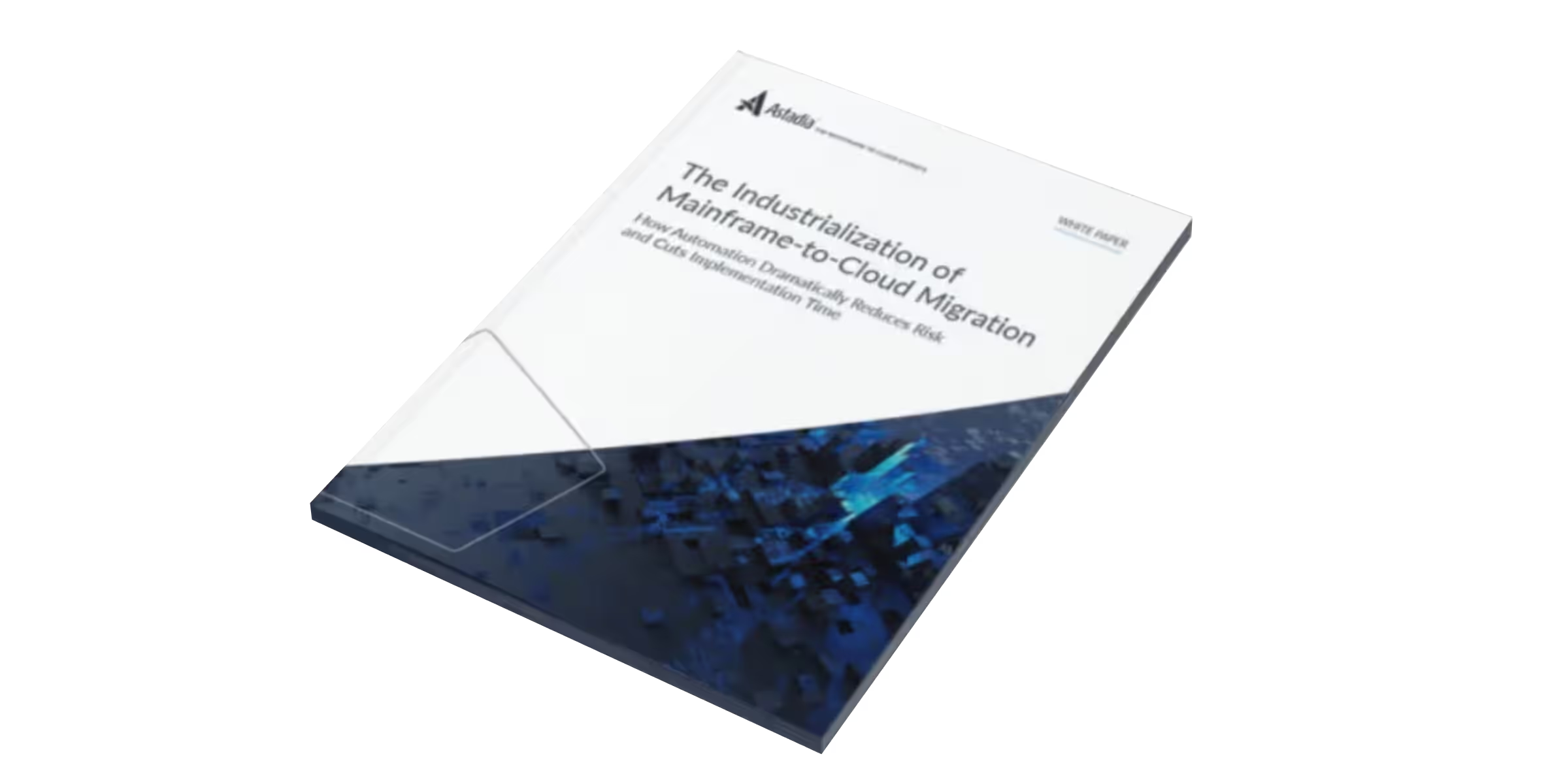Everybody agrees that automation is key to mainframe modernization regardless of the selected transformation approach, particularly in replatforming or refactoring projects. Not everybody, however, has the vision to automate the journey all the way.
With the right strategy, tools, and methodology, complex migration processes can be almost entirely automated, guaranteeing efficient, error-free work, reduce the turnaround time for workflows, and eliminate potential errors or delays. The automation of complex migration process not only translates into essential cost reductions and shorter project duration, but it also gives IT teams confidence and control over the transformation project.
At Astadia, we use the Migration FastTrack Factory, a software platform featuring a collection of tools, processes, and technologies, to accelerate and standardize migration projects helping our clients accomplish their goals much faster by reducing the duration of a typical migration project by as much as 90%.
Three levels of automation
Automated transformation
The first level of automation is transformation. Transformation of data and code needs to be automated, no doubt about it. There is less agreement on the degree of automation, especially of the code. For instance, one school of thought promotes manual and semi-automated interventions when coming off the mainframe and moving to the Cloud, as a result of this leaving the principle of iso-functional transformations.
The idea of iso-functional transformations, aka like-for-like, on the other hand promotes 100% automated code transformation, postponing other changes until the application has landed in the cloud, and the latest skills and tools are available to undertake this endeavor. Additional benefits are that one does not mix two different objectives and increases risk, and that testing can be automated.
At Astadia, we believe that considerably sized projects deserve and benefit from 100% automation during transformations, leading to shorter project times and much higher success rates.
Automated testing
The second level of automation is testing. If the transformation is 100% like-for-like or iso-functional, there is this fantastic benefit of being able also to automate the testing. One can compare the functionality of the mainframe environment with the functionality of the Cloud environment by software in order to establish the degree of correctness of the transformations. It is hard to overestimate the benefits of this capability and its positive effect on code quality as well as project duration.
Automated workflow
The third level of automation is the workflow. We “factorize” the project by automating not only the individual steps in the process but the process itself. The entire refactoring or replatforming project is now automated and can be operated by virtually anyone in a repeatable, consistent, predictable, and risk-free way.
The below screenshot shows a Jenkins Pipeline that performs all needed steps to analyze and convert a COBOL application to Java, build and deploy the Java, and execute the automated tests on the converted application.

Introducing the Astadia FastTrack Factory
To offer the highest level of automation on the market, Astadia introduced the Astadia FastTrack Factory: a collection of tools, processes, and technologies to accelerate and standardize a successful mainframe migration project.
FastTrack can automate the entire migration process:
- Transformation and conversion
- Testing of online and batch applications
- Workflow driven based on a proven methodology
Since the “migration know-how” is embedded in this automation, the specific source and target know-how required is limited to market available IT skills. No extensive mainframe experience is required to be a great contributor in the factory. People can be trained to an operational level in a matter of weeks.
As a result, the Astadia FastTrack Factory is highly scalable. It can be established anywhere, at the location of choice for the partner or client. Its objective is to achieve a successful and timely migration project while prioritizing a focus on risk and cost minimization. To achieve this, the Factory builds upon clear processes, automated migration, and testing tools, as well as a unique methodology.
Game-Changing Technology
In terms of risk mitigation and speed of execution, the FastTrack Factory is a game-changer. With this approach, we spend most of our effort working with clients to design and map the migration process. Once that is complete, we can run test after test, as many times as we want, using the latest data and new test scenarios based on actual user activity. By the time we’re ready to go live, we know exactly what to expect. We know how much data needs to be moved and how long the process will take. We will have run as many test scenarios as necessary to establish complete confidence in the migrated system.
Whereas many traditional migration projects are executed in stages in order to mitigate risk, the FastTrack Factory enables a clean cutover of both code and data to a new target system because the migrated system has been so thoroughly tested. While some clients will still opt to perform their migrations in stages, – FastTrack provides a considerably greater range of options, in large part because the risk involved with performing a clean cutover is so dramatically reduced.
Related news
Related white papers:
Astadia Migration Factory
Learn what the industrialization of mainframe to cloud migration entails and how automation dramatically reduces risk and cuts implementation time in mainframe migration projects.
View more
Let's Talk
Get in touch with our experts and find out how Astadia's range of tools and experience can support your team.
contact us now

.avif)




